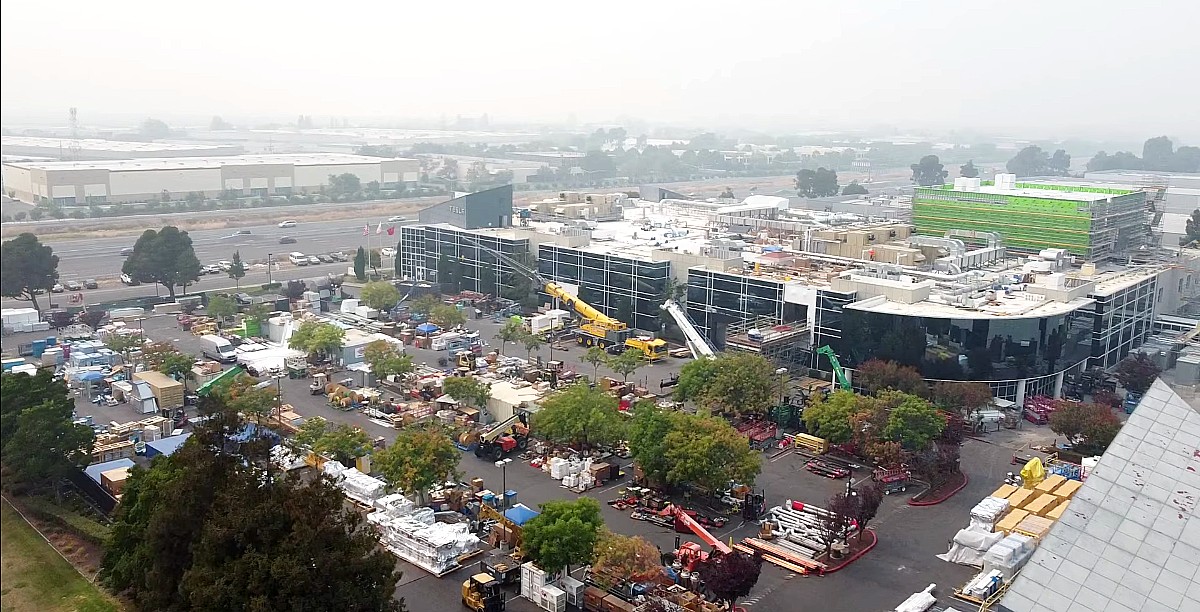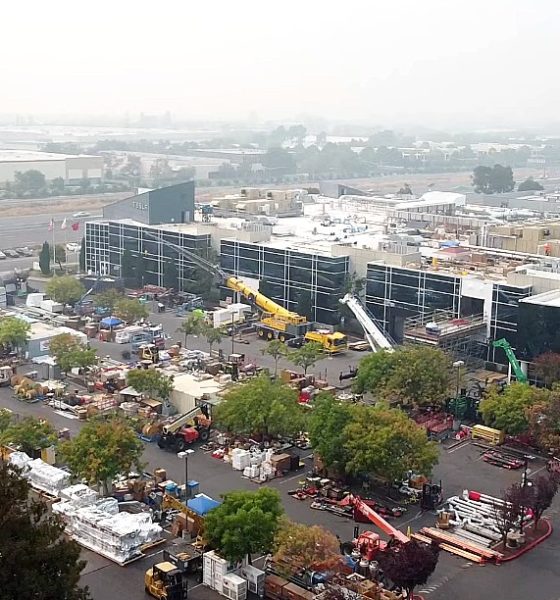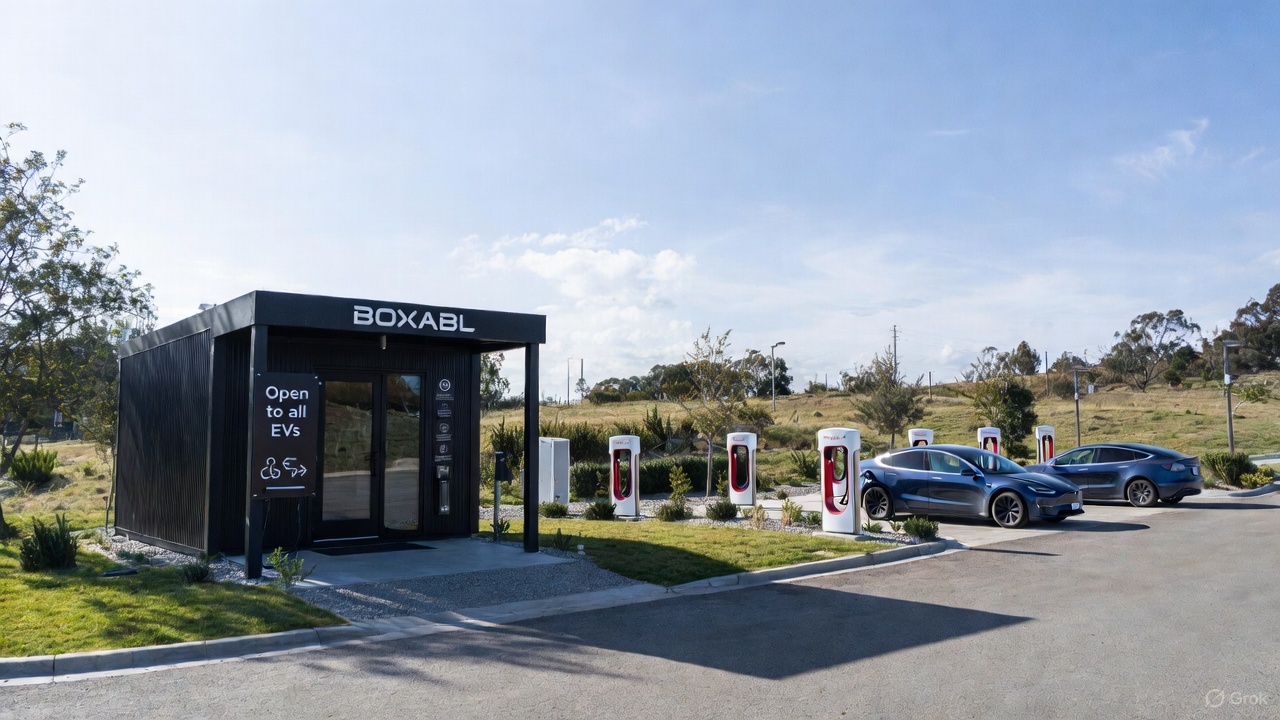

News
Tesla’s ‘Roadrunner’ facility gets a neighbor working on tech beyond the million-mile battery
As the wait for Tesla’s Battery Day continues, more and more speculations are abounding about what the electric car maker might reveal during the highly-anticipated event. Elon Musk has stated that Battery Day’s announcements will be mind-blowing, and based on apparent clues recently observed by the Tesla community, it appears that the CEO may be right on the money.
Recent reports have indicated that Amprius, a battery company currently working on silicon nanowire tech, recently relocated its headquarters to a site that’s just a few hundred feet away from Tesla’s Roadrunner battery facility in Kato Road, Fremont. Considering the firm’s focus, its new headquarters’ rather convenient location, and Elon Musk’s previous references to the use of silicon in batteries, there seems to be a fair chance that Amprius’ move to Fremont may be more than a coincidence.
Amprius notes that it is working on creating silicon nanowires for battery anodes that dramatically improve battery weight and density. The company’s website notes that silicon generally has about 10x the capacity of graphite (carbon), but it has a big drawback in the way that it swells when it’s charged, causing the silicon to fracture. To address this, Amprius utilizes silicon nanowires, which keeps the silicon from fracturing and breaking apart even when it swells.
As noted by EV enthusiast and YouTube host Driving Delta, Elon Musk himself appears to be teasing the use of advanced silicon tech on Twitter last month. In one of his posts, Musk shared some lyrics of the song “Lithium” by Nirvana, whose refrain includes sections that state “I’m not gonna crack.” Granted, Musk may simply be trolling the Tesla community with his posts, but it should be noted that he also talked about the increasing use of silicon anodes five years ago.
“We’re shifting the cell chemistry for the upgrade battery pack to partially use silicon in the anode. This is just a sort of baby step in the direction of using silicon in the anode. We’re still primarily using synthetic graphite, but over time, we’ll be using increasing amounts of silicon in the anode,” Musk noted during a 2015 conference call.
As noted by Amprius’ on its website, the use of 100% silicon paves the way for batteries with the highest energy density, perhaps even at the 500 Wh/kg level. That’s enough to start exploring electric VTOL projects, a topic that Elon Musk has admitted is something that truly interests him. That being said, Professor in Energy Materials and Technologies Ying Shirley Meng, who has made significant contributions to Maxwell Technologies’ battery tech herself, believes that challenges still remain in the use of silicon nanowires.
“We should pay attention to the cost per kg. Even (if) those nanowires work (which I doubt), to produce consistent quality in metric ton scale at 10$ per kg it will be sci-fi for now,” she noted.
Elon Musk, for his part, recently stated that the technology that could allow 400 Wh/kg with a high life cycle and volume production is not too far away. Musk gave a rough timeframe for the technology, stating that such milestones could be achieved in about three to four years.
Tesla’s Battery Day event is expected to introduce the company’s next-generation lithium-ion cells, though speculations suggest that these batteries — which are expected to last a million miles — are based largely on Maxwell Technologies’ dry electrode tech. Maxwell itself has previously noted that it could offer batteries with 300 Wh/kg while stating that it had also identified a path to 500 Wh/kg. With this in mind, it appears that Tesla may already be setting the stage for cells that will likely go even beyond the million-mile battery.
Granted, Amprius’ move to Fremont may be unconnected to Tesla. That being said, the two companies’ goals to align with each other, and Elon Musk’s own references to the use of silicon suggests that Tesla will likely get a lot of value from Amprius’ tech. If speculations prove true, the path to batteries that go even further than the million-mile mark may be feasible in the near future. Such innovations are key to Tesla’s goal of accelerating the transition to sustainable energy, after all.
Watch these recent takes on the Amprius rumors in the videos below.

News
Tesla discloses interesting collaboration partner for Supercharging
This BOXABL collaboration would be a great way to add a rest stop to a rural Supercharging location, and could lead to more of these chargers across the U.S.

Tesla disclosed an interesting collaboration partner in an SEC filing, which looks like an indication of a potential project at Supercharger sites.
Tesla said on Tuesday in the filing that it was entering an agreement with BOXABL to design and build a Micromenity structure. Simply put, this is a modular building, usually a few hundred square feet in size, and it has been seen at Superchargers in Europe.
In Magnant, France, Tesla opened a small building at a Supercharger that is available to all EV owners. There are snacks and drinks inside, including ice cream, coffee, a gaming console, and restrooms. It gives people an opportunity to get up and out of their cars while charging.
This building was not built by BOXABL, but instead by bk World Lounges. It is likely the final Supercharging stop before people get to Paris, as it is located 250 kilometers, or 155 miles, from the City of Light.
Voir cette publication sur Instagram
Magnant has 56 stalls, so it is a large Supercharging stop compared to most. The building could be a sign of things to come, especially as Tesla has opened up larger Supercharger stations along major roadways.
It is for just a single building, as the Scope of Work within the filing states “a comprehensive package for one Micromenity building.”
NEWS: BOXABL, a company that creates modular, prefabricated buildings, has entered into an agreement with @Tesla.
This is Tesla formally contracting BOXABL to design, engineer, and build a pilot “Micromenity” structure, a compact, modular building unit.
While some info in the… pic.twitter.com/RabJczGpEp
— Sawyer Merritt (@SawyerMerritt) December 9, 2025
Superchargers are commonly located at gas stations, shopping centers, and other major points of interest. However, there are some stops that are isolated from retail or entertainment.
This BOXABL collaboration would be a great way to add a rest stop to a rural Supercharging location, and could lead to more of these chargers across the U.S.
Tesla has done a lot of really great things for Supercharging this year.
Along with widespread expansion, the company launched the “Charging Passport” this week, opened the largest Supercharger in the world in Lost Hills, California, with 168 chargers, opened the Tesla Diner, a drive-in movie restaurant in Los Angeles, and initiated access to the infrastructure to even more automakers.
Elon Musk
Tesla CEO Elon Musk confirms Robotaxi safety monitor removal in Austin: here’s when
Musk has made the claim about removing Safety Monitors from Tesla Robotaxi vehicles in Austin three times this year, once in September, once in October, and once in November.

Tesla CEO Elon Musk confirmed on Tuesday at the xAI Hackathon that the company would be removing Safety Monitors from Robotaxis in Austin in just three weeks.
This would meet Musk’s timeline from earlier this year, as he has said on several occasions that Tesla Robotaxis would have no supervision in Austin by the end of 2025.
On Tuesday, Musk said:
“Unsupervised is pretty much solved at this point. So there will be Tesla Robotaxis operating in Austin with no one in them. Not even anyone in the passenger seat in about three weeks.”
Musk has made the claim about removing Safety Monitors from Tesla Robotaxi vehicles in Austin three times this year, once in September, once in October, and once in November.
In September, he said:
“Should be no safety driver by end of year.”
The safety driver is just there for the first few months to be extra safe.
Should be no safety driver by end of year.
— Elon Musk (@elonmusk) September 4, 2025
On the Q3 Earnings Call in October, he said:
“We are expecting ot have no safety drivers in at least large parts of Austin by the end of this year.”
Finally, in November, he reiterated the timeline in a public statement at the Shareholder Meeting:
“I expect Robotaxis to operate without safety drivers in large parts of Austin this year.”
Currently, Tesla uses Safety Monitors in Austin in the passenger’s seat on local roads. They will sit in the driver’s seat for highway routes. In the Bay Area ride-hailing operation, there is always a Safety Monitor in the driver’s seat.
Three weeks would deliver on the end-of-year promise, cutting it close, beating it by just two days. However, it would be a tremendous leap forward in the Robotaxi program, and would shut the mouths of many skeptics who state the current iteration is no different than having an Uber.
Tesla has also expanded its Robotaxi fleet this year, but the company has not given exact figures. Once it expands its fleet, even more progress will be made in Tesla’s self-driving efforts.
News
SpaceX reportedly mulling IPO, eyeing largest of all time: report
“I do want to try to figure out some way for Tesla shareholders to participate in SpaceX. I’ve been giving a lot of thought to how to give people access to SpaceX stock,” Musk said.

SpaceX is reportedly mulling an initial public offering, eyeing what would be the largest valuation at the time of availability of all time, a new report from Bloomberg said on Tuesday.
It is one of many reports involving one of Elon Musk’s companies and a massive market move, as this is not the first time we have seen reports of an IPO by SpaceX. Musk himself has also dispelled other reports in the past of a similar nature, including an xAI funding round.
SpaceX and Musk have yet to comment on the report. In the past, untrue reports were promptly replied to by the CEO; this has not yet gained any response, which is a good sign in terms of credibility.
However, he said just a few days ago that stories of this nature are inaccurate:
“There has been a lot of press claiming SpaceX is raising money at $800B, which is not accurate. SpaceX has been cash flow positive for many years and does periodic stock buybacks twice a year to provide liquidity for employees and investors. Valuation increments are a function of progress with Starship and Starlink and securing global direct-to-cell spectrum that greatly increases our addressable market. And one other thing that is arguably most significant by far.”
There has been a lot of press claiming @SpaceX is raising money at $800B, which is not accurate.
SpaceX has been cash flow positive for many years and does periodic stock buybacks twice a year to provide liquidity for employees and investors.
Valuation increments are a…
— Elon Musk (@elonmusk) December 6, 2025
Musk has discussed a potential IPO for SpaceX in recent months, as the November 6 shareholder meeting, as he commented on the “downsides” of having a public company, like litigation exposure, quarterly reporting pressures, and other inconveniences.
Nevertheless, Musk has also said he wants there to be a way for Tesla shareholders to get in on the action. At the meeting in early November, he said:
“I do want to try to figure out some way for Tesla shareholders to participate in SpaceX. I’ve been giving a lot of thought to how to give people access to SpaceX stock.”
Additionally, he added:
“Maybe at some point., SpaceX should become a public company despite all the downsides of being public.”
Musk has been historically reluctant to take SpaceX public, at times stating it could become a barrier to colonizing Mars. That does not mean it will not happen.
Bloomberg’s report cites multiple unidentified sources who are familiar with the matter. They indicate to the publication that SpaceX wants to go public in mid-to-late 2026, and it wants to raise $30 billion at a valuation of around $1.5 trillion.
This is not the first time SpaceX has discussed an IPO; we reported on it nine years ago. We hope it is true, as the community has spoken for a long time about having access to SpaceX stock. Legendary investor Ron Baron is one of the lucky few to be a SpaceX investor, and said it, along with Tesla, is a “lifetime investment.”
Tesla bull Ron Baron reveals $100M SpaceX investment, sees 3-5x return on TSLA
The primary driver of SpaceX’s value is Starlink, the company’s satellite internet service. Starlink contributes 60-70 percent of SpaceX’s revenue, meaning it is the primary value engine. Launch services, like Falcon 9 contracts, and the development of Starship, also play supporting roles.








